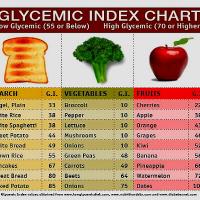Understanding The CARB Refrigerant Gas Management Regulations (2010 early actions)
The following explains the refrigerant gas management program to be included in the AB 32 legislation in California. We will also provide details related AC/HVAC system refrigerant gas leak detection, monitoring, tracking, and reporting. These details related to the California Air Resources Board (CARB) regulation to be passed in early 2009 as well as the anticipated U.S. EPA adoption of similar regulations.
Environmental compliance regulations are often misunderstood by owners and operators of facilities who must comply. In regard to refrigerant management, the California Air Resource Board (CARB) and U.S. Environmental Protection Agency (EPA) have drafted the 2009 CARB refrigerant program and the proposed EPA regulation orders for managing High Global Warming Potential (GWP) refrigerants.
The proposed California Air Resource Board (CARB) draft legislation is identified as Subchapter 10, Article X, Sections 9 through 17 with sub-sections included of the California Code of Regulations which was created on September 4, 2008. As of this writing, the CARB early action members are working through a schedule of meetings to collect any feedback and refine the Stationary Equipment Refrigerant Management Program before it becomes law later in 2009.
Understanding refrigerant gas management regulations, including the 2009 CARB program and the expected EPA regulations, one can break down the overall topics into three main areas:
* Purpose, * Applicability, and * Definitions
Purpose of Stationary Equipment Refrigerant Management Program
The purpose of the regulation relates to the management of high global warming potential (GWP) refrigerant. The new laws, taking effect in January of 2010, will reduce or eliminate emissions of refrigerant gases from AC/HVAC systems and related industrial refrigeration units. Secondary to reduction of emissions from refrigerants is the requirement for owners and operators of such equipment to institute new methods of reclaiming, recycling or recovering refrigerant as well as to encourage proper repair or replacement of obsolete refrigeration and air conditioning equipment with state-of-the-art (SOTA) equipment.
CARB and many of the leading manufacturers are in discussions to ensure that manufacturer specifications meet the emerging CARB and EPA standards. Unfortunately, there are challenges with cylinder management. It is often difficult to maintain accurate labels or tracking information for refrigerant containers passed throughout the industry. More work among manufacturers will lead to the creation of unique serial numbers to accurately track cylinders. For pervasive industry wide tracking of refrigerant gases, the establishment of a set of protocols for cylinder identification will continue to be important.
Applicability of AC/HVAC System Monitoring, Tracking, and Registration
These regulations provide a better understanding of who must comply. Essentially, the new CARB refrigerant management program applies to;
A) Any persons who own or operate stationary refrigeration or air conditioning systems containing refrigerant gas, and
B) Any persons who are engaged in installation, repair, maintenance, service, replacement recycling or disposal of stationary refrigeration or air conditioning systems as well as sellers of refrigerant.
Definitions and Key Refrigerant Gas Management Terms
Included in the CARB regulations is a useful guide that explains in detail many of the regulatory terms applicable and in hoping to facilitate enhanced compliance. Included as a summary are the key concepts related to refrigerant gases, refrigerant leaks, how to track refrigerant usage events, and more. The goal is to educate and provide information for facility managers to better manage refrigerants and their related reporting. Additional definitions and applicable citations include "Additional Refrigerant Charge", "Air Conditioning System", which defines AC/HVAC equipment as it applies to the regulation, "Air District" which means an Air Quality Management District or Air Pollution Control District for the purpose of refrigerant reporting and submittals, "Air Pollution Control Officer", and a citation for "Automatic Leak Detection" as well as for specification for qualifications on certifications for reclaimers and other certified technicians.
Why Refrigerant System Management is Such a Big Deal
Understanding the CARB Stationary Equipment Refrigerant Management Program regulation is simplified and outlined in their 27-page draft. Through the first part of 2009, the CARB early actions group will make revisions to the Stationary Refrigeration Equipment Program. It is known, due to mandatory deadlines for completion of this regulation that it will pass in 2009 and be effective in 2010.
As with all environmental compliance, determining whether an owner or operator must comply is the first step. Using the 2009 CARB draft as a guide, refrigerant management from an enforcement and user standpoint addresses the problem of refrigerant gases that increase global warming effects in a judicious and effective initiative.
The California Air Resources Board (CARB) early actions and improvements to refrigerant tracking enhances knowledge and improves the requirements necessary to track, maintain, and report high global warming potential refrigerants before they reach the atmosphere. With improved environmental monitoring and legislation, we gain improved environmental health and safety. This results in benefits to not only human prosperity but also long term benefits to the environment.
-
Low-Carb Diets and Cheese
Acc
-
How to Lose Baby Weight Fast and Keep It Off
Too many moms resort to crash dieting and carb-cutting thin
-
Pasta Puttanesca, Lady Of The Night Pasta, Great Dish As A Main Course
This is a great dish, and it has many great and different f
-
Kvas
by
-
Finding Good Vegetarian Low Carb Recipes
There are many vegetarian low carb recipes out there but selecting a g
-
The way to Clean and Rebuild Carburetors (2)
Also try tightening carb top screws or other carburetor bod
- DON'T MISS
- Can All Low Carb Diets Improve Your Health?
- Getting the Best from Low Carb Diet for Weight Loss
- Are Low Carb Diets Safe?
- Low Carb Diet Menu:facts About The Excessive Protein, Low Carb Diet
- Weight Loss
- How Atkins Low Carb Diet Products Work
- Using Food to Heal Emotions
- Eating Low Carb? Be Informed About Mad Cow
- Long Term Results with Atkins Diet
- Low Carbohydrate & Smart Carb Dieting




